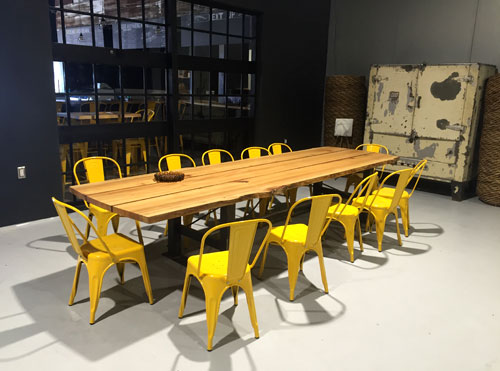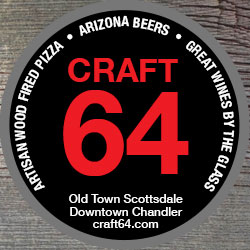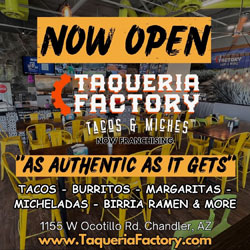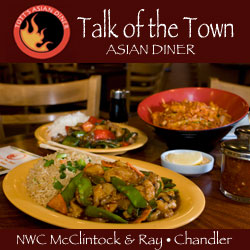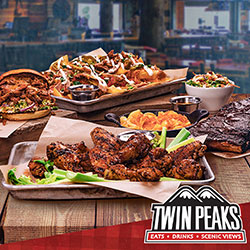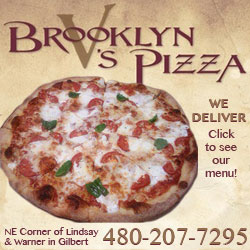
After industry and social media nights last week, the Valley’s newest brewery – Helton Brewing on the northwest corner of Indian School and 21st Street in Phoenix – opens its doors to the public Tuesday.
Owner and brewmaster Brian Helton only has one of his own beers on his 12 taps to start with, but more to come soon. The kitchen similarly is starting with cheese and charcuterie and will add items as it goes.
Hours are 3 to 9 p.m. Tuesday through Friday, and noon to 9 p.m. Saturday and Sunday. Happy hour, which runs 3 to 6 p.m., includes $1 off all drafts.
I stopped in to chat with Helton on Monday, the calm before the storm…
You’re opening with just one of your own beers on tap. Does the Scottish-style ale have a name?
‘‘No, not yet. We might just stick with the basics like Helton Scottish Ale or Helton IPA. A lot of the beer names have been taken, and to go through the whole process – the COLA, the TTB, the feds – is a lot of manpower just to get to the point you might have to pull it. We’ve already seen it happen with Fate and Wren (House). So I figure, in the beginning, let’s just call them what they are.’’
Why do a Scottish ale first?
‘‘A lot of breweries start with an amber or Scottish because it’s your yeast farm. We start the yeast with this beer. It doesn’t have a lot of hop material that’s gonna be transferred to the next batch. There’s not gonna be a lot of roasted malt character like a stout. There’s not a lot of alcohol in this one. You’re looking for a very neutral beer to start growing your yeast. The next two batches I brew, which will be this week, the milk stout and the IPA, you can use that yeast.’’
So those other two beers also will be on tap this month?
‘‘Yes.’’
You have 12 taps total?
‘‘We’ll have 12 taps right now, but we easily could do 24 if we wanted to double up along the wall. We’ll get the core beers out there, then we’ll start doing two or three seasonals and see how they’re hitting.
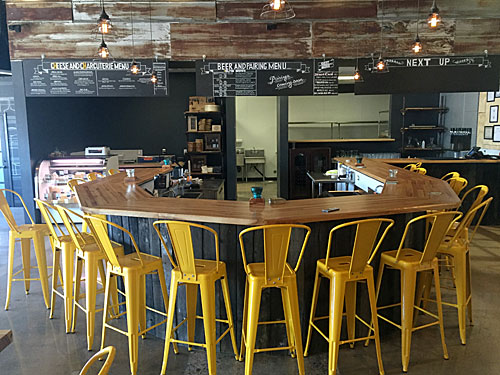
How many core beers are you planning?
‘‘We have four core beers. The reason is I have eight serving tanks. So once we get to the point of wanting to distribute, we’ll have one tank designated for in-house and one strictly for packaging (for each core beer).’’
You mentioned the Scottish ale, milk stout and IPA. What’s the fourth?
‘‘It’ll be a pilsner. I like to do a lot of lagers. Coming from Cincinnati, I was kinda forced at a young point in my brewing career to do lagers. Cincinnati has a huge German influence.’’
How soon will we see the first Helton seasonal? This fall?
‘‘I would say within a month we’ll have some type of seasonal beer on.’’
Wow, that’s soon. So you’ve decided what it will be?
‘‘No, I haven’t. I gotta look to see where we’re coming on. I don’t want to put something out prematurely.’’
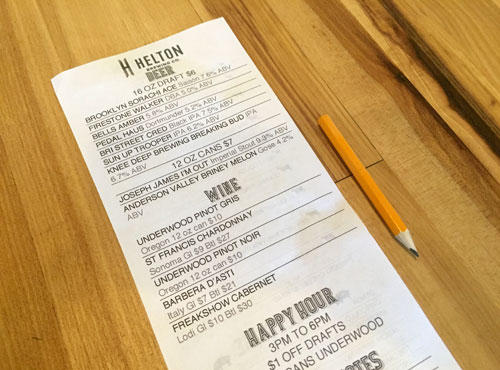
Speaking of yeasts, what are your thoughts about sours and wild ales?
‘‘Love ‘em. Never been able to do ‘em, so to speak. With kettle souring, what guys are doing out there these days is intriguing. We’ll probably take a look at it once we get our barrel program going.’’
What’s your strategy and timetable for packaging?
‘‘There’s all kinds of issues with cans right now with time. Last I heard, the canning machine I wanted is six months out. If that’s the case, we’ve gotta think about what we’re looking for.’’
What are your alternatives?
‘‘We probably can do mobile canning. There’s a couple of companies out of San Diego and one out of Albuquerque that we’ll be talking to. We may go down that route to test the market. Along with that, our first purchase may be a six-head bottle filler that can do 22-ounce bottles.’’
What about distribution?
‘‘We’re gonna keep it very soft in the beginning. We only have around 30 accounts we’ve been talking to, and they’re all within a 5- to 10-mile radius for quality assurance. We’ll start with a very small radius and make sure everything is fine. When we’re happy with the quality of the product, we’ll move to a 15- to 20-mile radius and slowly grow it as we feel comfortable.’’
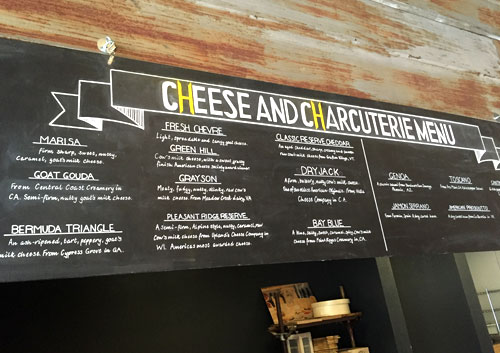
If you had to sum up your food menu in just a couple words, what would they be?
‘‘Small plates. What we’re doing now is slowly bringing in certain items. The first week, we did cheese and charcuterie. This week, we might throw in a couple of panini sandwiches. The following week we’ll add another item. We’ll slowly get into salads, waffles. It’s all about small plates. It’s all about the pairings.
Can you give me an example?
‘‘We’ll take a waffle and a slice of Serrano ham with an artichoke jam on it and it’ll blow your mind. Waffles don’t always have to be sweet. They can be savory, too. So it’s all about small plates. I want to contribute to the experience with the beer itself.
How big do you see the food menu eventually getting?
‘‘I don’t think it’s gonna to be too big. I think it’s gonna be more ‘‘changing’’ than big. We’ll change with the seasons, we’ll change with the ideas, and we’ll change with the beers we have. If I have a seasonal beer, some of the food items will be a reflection of just that beer.’’
Tasting rooms generally don’t have kitchens. But you prefer that term instead of brewpub?
‘‘At the end of the day, I’m not trying to be a restaurant. I don’t want to be a restaurant. I don’t really want to be a bar. We’re a tasting room that’s gonna offer great pairings. It’s trying to educate the public that beer is food, you know? It’s just not supposed to be a beverage to consume because it has ethanol and makes you warm and fuzzy. It’s actually a food item.’’
So how do you teach the public?
‘‘We’ll show people how they can do progressions. You can start with one food item with this beer, and then move to this one. We’ll have our pairings list – suggestions for the week – and people can kinda run the gauntlet and see how the beer and food go together, whether it’s cutting it, contrasting it, or complementing it. It’s all about that fun stuff.
Does your kitchen in any way limit what you’ll be able do?
‘‘We made the kitchen much larger than normal for this reason: We can grow into this to do whatever we need to do. If we want to put a hood system back there, I designed a kitchen for that. But our next purchase will be a salad station, and then we’ll get an oven. Those are our two next steps.’’
As the Valley’s newest brewery, how do see the local craft beer scene?
‘‘I’m excited for the Valley. I think we’re San Diego maybe six, seven years ago. I think the palates of people here have grown to anticipate and expect quality products. I think they’re demanding traditional styles, along with some very unique beers people are putting out there.
‘‘I think your typical pilsner light drinkers are a little bit more adventurous these days. They’re trying a gose in a can out on the golf course. No one’s really producing giant whales in Phoenix. A couple guys are, but nothing like the San Diego market where everyone has a big IPA, a big stout.
‘‘I think this is our time. Our prime is about ready to hit.’’

